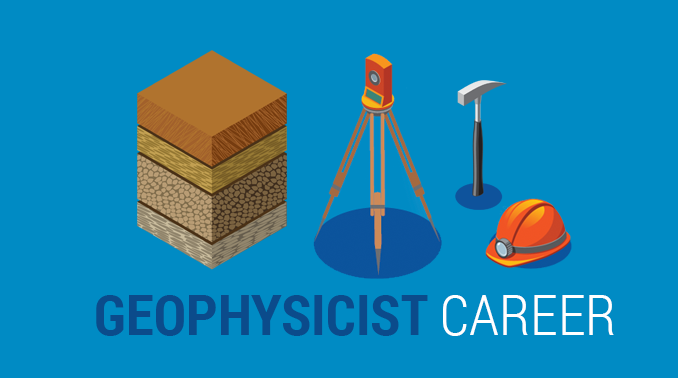All Categories
Featured
Table of Contents
Greeley-evans Area 3d Geophysical Survey in Mariginup Aus 2020

The main design for the radial structure of the interior of the Earth is the initial recommendation Earth design (PREM). Some parts of this design have actually been updated by current findings in mineral physics (see post-perovskite) and supplemented by seismic tomography. The mantle is primarily composed of silicates, and the boundaries in between layers of the mantle are consistent with stage shifts.

Schematic of Earth's magnetosphere. Flows from left to.
Inside the magnetosphere, there are fairly dense regions of solar wind particles called the Van Allen radiation belts. Geophysical measurements are generally at a particular time and place. Accurate measurements of position, in addition to earth deformation and gravity, are the province of geodesy. While geodesy and geophysics are separate fields, the 2 are so carefully connected that many scientific companies such as the American Geophysical Union, the Canadian Geophysical Union and the International Union of Geodesy and Geophysics encompass both.
Geophysical Survey Techniques And Methods in Secret Harbour Oz 2020
A three-dimensional position is calculated utilizing messages from 4 or more noticeable satellites and referred to the 1980 Geodetic Recommendation System. An option, optical astronomy, integrates astronomical coordinates and the regional gravity vector to get geodetic collaborates. This technique just provides the position in 2 collaborates and is more tough to utilize than GPS.
Gravity measurements ended up being part of geodesy due to the fact that they were needed to related measurements at the surface of the Earth to the referral coordinate system.
Water level can also be measured by satellites using radar altimetry, contributing to a more precise geoid. In 2002, NASA released the Gravity Healing and Climate Experiment (GRACE), wherein 2 twin satellites map variations in Earth's gravity field by making measurements of the range in between the 2 satellites using GPS and a microwave ranging system. Satellites in area have made it possible to collect data from not just the visible light area, however in other areas of the electromagnetic spectrum. The planets can be characterized by their force fields: gravity and their magnetic fields, which are studied through geophysics and area physics. Determining the changes in acceleration experienced by spacecraft as they orbit has actually allowed fine information of the gravity fields of the worlds to be mapped.
Geophysicist Education in Edgewater Oz 2022

Given that geophysics is concerned with the shape of the Earth, and by extension the mapping of features around and in the world, geophysical measurements consist of high precision GPS measurements. As soon as the geophysical measurements have actually been processed and inverted, the translated outcomes are plotted using GIS.
Lots of geophysics companies have developed in-house geophysics programs that pre-date Arc, GIS and Geo, Soft in order to satisfy the visualization requirements of a geophysical dataset. Expedition geophysics is applied geophysics that typically uses remote noticing platforms such as; satellites, aircraft, ships, boats, rovers, drones, borehole picking up equipment, and seismic receivers.
Aeromagnetic information (airplane gathered magnetic information) collected using standard fixed-wing airplane platforms must be corrected for electromagnetic eddy currents that are produced as the airplane moves through Earth's magnetic field. There are also corrections related to modifications in determined prospective field intensity as the Earth rotates, as the Earth orbits the Sun, and as the moon orbits the Earth.
Marine Geophysicist - Explore The Seafloor in Mundaring Oz 2023
Signal processing includes the correction of time-series information for undesirable sound or mistakes presented by the measurement platform, such as airplane vibrations in gravity information. It likewise involves the decrease of sources of sound, such as diurnal corrections in magnetic information. In seismic information, electro-magnetic information, and gravity data, processing continues after error corrections to consist of computational geophysics which lead to the last analysis of the geophysical information into a geological analysis of the geophysical measurements Geophysics emerged as a separate discipline just in the 19th century, from the crossway of physical location, geology, astronomy, meteorology, and physics.
The magnetic compass existed in China back as far as the 4th century BC. It was not up until great steel needles could be created that compasses were utilized for navigation at sea; prior to that, they could not keep their magnetism long enough to be useful.
By looking at which of 8 toads had the ball, one might identify the instructions of the earthquake.'s (1600 ), a report of a series of precise experiments in magnetism.
What Is Geophysics And What Do Geophysicists Do? in West Leederville Western Australia 2020
In 1687 Isaac Newton published his, which not just laid the foundations for classical mechanics and gravitation however likewise explained a variety of geophysical phenomena such as the tides and the precession of the equinox. The first seismometer, an instrument efficient in keeping a constant record of seismic activity, was constructed by James Forbes in 1844. Geochemistry, Geophysics, Geosystems. National Aeronautics and Space Administration. Recovered 13 November 2018.
Leipzig. Berlin (Gebruder Borntraeger). Runcorn, S.K, (editor-in-chief), 1967, International dictionary of geophysics:. Pergamon, Oxford, 2 volumes, 1,728 pp., 730 fig Geophysics, 1970, Encyclopaedia Britannica, Vol. 10, p. 202-202 Ross 1995, pp. 236242 Shearer, Peter M. (2009 ). Intro to seismology (second ed.). Cambridge: Cambridge University Press. ISBN 9780521708425. Stphane, Sainson (2017 ).
Latest Posts
What Should I Do To Be A Geophysicist? in Subiaco WA 2022
Geophysicist - Jobs And Skills Wa in Midland Western Australia 2023
Career Guide: Geophysicist in Tapping Aus 2022